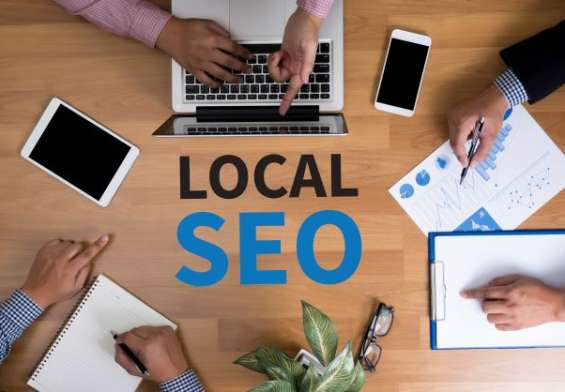The New Search Revolution: How AI Is Changing Visibility for Every Business Owner
Search these days is reaching a critical mass of esemplasticity due to AI’s emergence. It’s flud, shifting search faster than most organizations can plan budgets. For twenty years, Search Engine Optimization (SEO) governed visibility. Now, Artificial Intelligence is reshaping discovery through Generative Engine Optimization (GEO).
GEO determines whether your brand’s expertise appears inside AI-generated answers. When customers ask Google’s AI Overviews or ChatGPT a question, those systems choose which sources to cite and summarize.
So, what’s the real difference between SEO and GEO, and how should a business owner adapt before competitors surge ahead?
SEO vs GEO in 60 Seconds: The Clear Difference Business Owners Should Know
The key difference between SEO and GEO is that SEO helps your website rank in search results, while GEO helps your content appear inside AI-generated answers. SEO drives traffic through rankings and clicks. GEO builds authority by embedding your brand in what AI actually says. Together, they secure full-funnel visibility in an AI-first world.
Learn how to optimize for generative AI engines in 2025 to stay competitive in this evolving search landscape.
Why SEO Still Drives Visibility and Revenue in 2025
SEO is still what gestates digital trust. It shows search engines and AI systems that your content is relevant, reliable, and actionable. Without it, GEO has no roots.
How Modern SEO Actually Works for Business Growth
Search engines check hundreds of signals to determine if your page solves a user’s problem. The most decisive pillars are:
- Relevance: Do your pages match intent and answer the query directly?
- Authority: Do credible websites link to you and mention your brand?
- Technical strength: Is your site fast, secure, and easy to crawl?
- User experience: Do people stay, interact, and convert on your pages?
- Content quality: Is your information accurate, complete, and current?
These pillars represent today’s AI content optimization best practices. They make your pages easier for algorithms and generative models to interpret. That verifies your site’s discoverability via search and AI-powered content discovery.
If you’re in a local trade or home services field, see how voice search and AI are future-proofing digital marketing for general contractors.
How SEO Has Evolved in the AI Era
Early SEO emphasized keyword density and link volume. Modern SEO prioritizes intent, depth, and context. Updates like Hummingbird, RankBrain, and BERT nudged ranking more toward semantic understanding and user satisfaction.
Now, the best-performing pages follow AI-ready website content principles. Those include mapping topics, entities, and relationships clearly. That same structure is what helps AI engines harvest accurate, attributable insights for their generated responses.
E-E-A-T: The Trust Factor That Connects SEO to GEO Success
Experience, Expertise, Authoritativeness, and Trustworthiness (E-E-A-T) turn content into credible data sources. Author bios, citations, and first-party research reduce ambiguity for humans and machines alike.
Visible, verifiable E-E-A-T gives AI systems confidence in using your material. That confidence glues SEO and Generative Engine Optimization together into something wholly new: the future of search optimization.
Local and Industry SEO: Why Your Niche Still Matters to AI Systems
Local pages, category hubs, and service FAQs still have meaning. They create clear topical footprints for AI models to follow. If your site cleanly covers a niche, generative engines recognize that leadership.
Remember, SEO builds the foundation. GEO extends that foundation into AI-driven conversations and AI-assisted buying journeys.
What Is GEO and Why It’s the Future of Search Visibility
GEO (Generative Engine Optimization) is the discipline of preparing content to be selected, cited, and summarized by AI systems. Instead of traditional page rankings, you’re trying to get AI answers to include your content.
Let’s say someone asks, “Who are the top digital marketing firms in New Jersey?”, for example. The AI draws its response from structured, trustworthy sources. GEO pumps your odds of being one of them.
This is part of a broader movement toward optimizing for AI search and the future of SEO.
How GEO (Generative Engine Optimization) Gets Your Business Inside AI Answers
- Entity clarity: Use consistent names, categories, people, and places across pages.
- Structured data: Schema markup teaches AI what sections mean, not just what they say.
- Conversational formatting: Write like you’re answering a customer directly.
- Authority signals: Mentions, quotes, and citations across reputable domains matter.
- Freshness and precision: Updated, specific, and verifiable facts win inclusion.
These techniques represent the AI content optimization best practices in 2025. GEO isn’t a replacement for SEO. It’s the natural reaction to generative AI’s shift from ranking lists to synthesized, conversational answers.
SEO vs GEO Comparison: How Each Strategy Impacts Your Bottom Line
| Category | SEO (Search Engine Optimization) | GEO (Generative Engine Optimization) |
| Goal | Rank in search results and earn clicks | Be cited or summarized inside AI answers |
| Audience | Search engines and human users | AI models like ChatGPT, Gemini, Perplexity |
| Focus | Keywords, links, technical health | Entities, structure, credibility, clarity |
| Format | Long-form guides, landing pages | Q&A, summaries, definitional snippets |
| Metrics | Rankings, traffic, conversions | Mentions, citations, inclusion rate |
| Tools | Search Console, Ahrefs, Semrush | Schema, entity maps, AI visibility checks |
| Outcome | Visibility via SERPs | Visibility via AI-generated conversations |
Both share the same destination: qualified attention. GEO approaches that destination through AI’s roving lens.
AI SEO vs GEO: How Smart Businesses Use Both to Dominate Search and AI Results
Many teams conflate AI SEO vs GEO. They’re complementary, not synonymous. AI SEO uses artificial intelligence to improve your SEO process. GEO optimizes your content for AI engines themselves.
Where AI SEO Improves Your Workflow — and Where GEO Wins the Visibility Game
AI accelerates research, clustering, and on-page analysis. Tools surface entity gaps, recommend outlines, and flag readability issues. Your team works faster without sacrificing depth.
AI also predicts intent shifts and content decay. Those insights keep evergreen articles fresh, which improves GEO readiness.
GEO focuses on placement in answers, not workflow speed. You structure content so AI can quote, paraphrase, or cite it confidently. That means crisp definitions, transparent sources, and consistent entities.
Combining AI SEO and GEO brings your search game to the highest level of AI content optimization best practices. Use AI SEO for smarter creation, and GEO for smarter inclusion.
See how personalization at scale through AI-driven customization supports these modern optimization efforts.
Combining SEO and GEO: The Strategy That Keeps Businesses Visible Everywhere
The difference between SEO and GEO is focus. SEO proves you’re trustworthy. GEO corroborates that trust when customers consume answers.
1) Maintain Technical and Content Health
Site speed, indexing, Core Web Vitals, and mobile performance still matter. AI systems use the same technical signals Google uses to model trust. Every modern visibility strategy derives from evergreen AI SEO best practices like these.
2) Structure for AI Understanding
Add FAQ, Article, Organization, Product, and LocalBusiness schema where relevant. Use consistent heading hierarchies, internal links, and short answer blocks.
3) Write Like a Helpful Specialist
Favor plain language, direct answers, and transparent sourcing. AI extracts clean claims and usable facts, not fluff or hype. This writing style directly supports AI-ready content for generative search.
4) Build Authority Beyond Backlinks
Thought-leadership quotes, PR mentions, and industry roundups diversify proof. When many reputable sources point to you, AI takes notice.
5) Align Content, Dev, and Analytics
Writers craft answerable sections. Developers maintain schema integrity. Analysts track AI inclusion and correlate it with brand demand. This integrated workflow is the crux of optimizing content for generative search in 2025.
How to Transition from SEO to GEO Without Starting Over
You don’t need a rebuild. You need a structured evolution that turns strong SEO into Generative Engine Optimization.
Step-by-Step: Turning Strong SEO Into Generative Engine Optimization
- Inventory and Triage: List pages with search traction, conversion value, or topical leadership.
- Add Schema and Entities: Reinforce business and topic identifiers.
- Reformat for Retrieval: Use definitional snippets and comparison tables.
- Publish Verifiable Insights: Include data and credible sources.
- Track Inclusion: Track AI Overviews and chat visibility.
- Operationalize GEO Habits: Train teams on structure and entity usage.
These actions help future-proof your site for AI-driven visibility. The earlier you make GEO part of your workflow, the easier it is to reconcile the next generation of search algorithms and answer engines.
Explore how conversational AI improves customer experience in eCommerce to better understand how AI reshapes brand visibility beyond search.
The Truth About GEO: 7 Myths Business Owners Still Believe
Myth 1: GEO replaces SEO
GEO depends on SEO’s credibility. Without authority, structure, and topical coverage, AI will not cite you. GEO amplifies; it doesn’t replace.
Myth 2: AI doesn’t use my content
Generative engines synthesize web knowledge from trustworthy pages. Even with limited links, your content can still shape the answer users see.
Myth 3: GEO is only for large brands
Small firms win GEO because they publish focused, specific guidance. Precision and structure beat size and budget in AI contexts.
Myth 4: GEO can’t be measured
You can measure inclusion qualitatively and directionally. Track citations in AI Overviews, chat summaries, and third-party answer engines. Watch branded search and direct traffic trends.
Myth 5: Keywords don’t matter anymore
Keywords still anchor topics. GEO pairs them with entities and definitions so AI understands who is making which claim and why it’s trustworthy.
Myth 6: GEO is a one-time rollout
Models and overviews evolve. Your structure must evolve with them. Treat GEO as an ongoing optimization, just like technical SEO and content refreshes.
Myth 7: Short content works best for AI
Short answers are helpful. Short pages are not. Depth, sources, and clarity let AI validate you. Balance brevity in answers with substance in the page.
Real-World GEO Success Stories: How Businesses Are Winning AI Visibility
Example 1: Digital Marketing Agency
A New Jersey firm publishes “What’s the Difference Between SEO and GEO?” The post leads with a 60-word definition, includes a comparison table, and uses Organization and Article schema. Google’s AI Overview cites the definition paragraph directly.
Example 2: Local Contractor
A roofing company creates “How to Spot a Chimney Leak vs Roof Leak.” It includes step-by-step bullets and photos with descriptive alt text. When homeowners ask a chatbot, it quotes that guide for the diagnostic steps.
Example 3: Healthcare Clinic
A spine clinic writes “Lower-Left Back Pain: Common Causes and When to See a Doctor.” The article uses medical review notes, sources, and FAQ schema. AI Overviews surface the clinic’s triage steps and warning signs.
Example 4: B2B SaaS
A fintech platform publishes “Payment Reconciliation vs Settlement” with clear definitions and diagrams. Chat assistants frequently cite the definitional blocks when users ask for differences.
Example 5: Professional Services
An employment law team explains “Remote Work as a Reasonable Accommodation.” Case references, jurisdictional nuances, and structured headings make it a favored source for generative summaries.
Each example succeeds by pairing clarity with structure. The content reads naturally, and the claims are easy for AI to reuse responsibly.
Key GEO Lessons Every Business Owner Should Act On This Year
- SEO builds the foundation; GEO amplifies it. SEO creates authority and structure. GEO turns that authority into inclusion inside AI answers. You’re visible in SERPs and audible inside AI responses, where many users now stop their journey. GEO is emerging as a modern business SEO strategy for AI engines.
- Structure is leverage, not decoration. Schema, headings, tables, and short answer blocks teach AI how to parse your page. Easier parsing becomes repeatable citations across queries and platforms. That’s imperative for optimizing content for generative search in 2025.
- Entities are the new anchors. Consistent names, places, and categories help AI tie your brand to specific expertise. Stronger entity graphs lead to more confident citations and fewer misattributions across generative systems.
- AI SEO vs GEO is a partnership. Use AI to speed research, clustering, and audits. Use GEO to secure your seat inside the final answer. Combining AI SEO’s workflow efficiency with GEO’s inclusion focus delivers long-term visibility.
- Freshness and specificity win. Keep pages updated and include verifiable numbers, processes, and definitions. Impact: AI prefers validated sources, reducing hallucination risk and strengthening credibility signals.
- Small brands can outpace big ones. Precision, locality, and topical depth beat generic authority. GEO gives smaller organizations a way to compete as search evolves toward AI summarization.
- Operationalize GEO habits. Bake entity checks, schema, and answer blocks into your editorial checklist. Every new page becomes AI-ready, supporting GEO as part of your business SEO strategy for AI search.
- Measure what matters. Track AI citations, brand mentions, and assisted conversions alongside rankings. You’ll understand how GEO directly influences traffic, awareness, and conversion lift in an AI-powered ecosystem.
Position Your Brand Inside the AI Answer Before Competitors Do
The shift from SEO vs GEO isn’t a trend cycle. It’s an infrastructure change in how people get answers and whom they trust. Ranking remains crucial but inclusion inside AI answers is where reputations are now made.
By adopting Generative Engine Optimization (GEO) and following AI content optimization best practices, you ensure your expertise shows up exactly where buyers ask for it. GEO now functions as a modern business SEO strategy for AI engines. It’s a bridge between traditional rankings and generative visibility.
To see how a structured approach moves your brand from search results into AI conversations, explore: From SEO to GEO: Position Your Brand in the AI Answer.
Your next customer may never scroll. They will ask. With GEO, the answer includes you.





